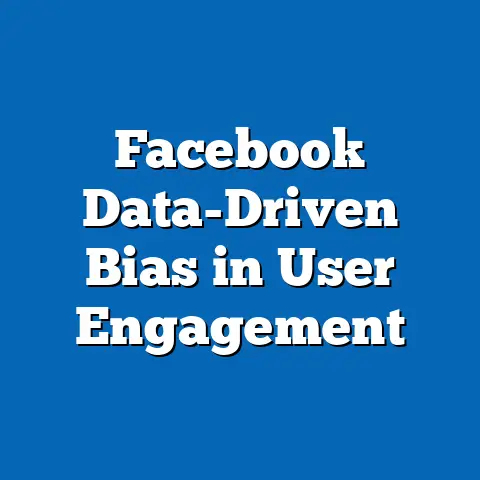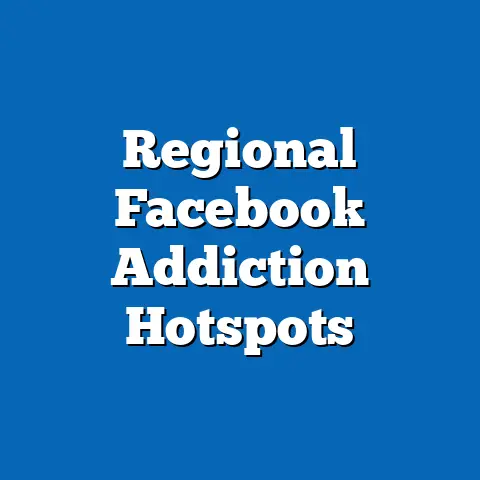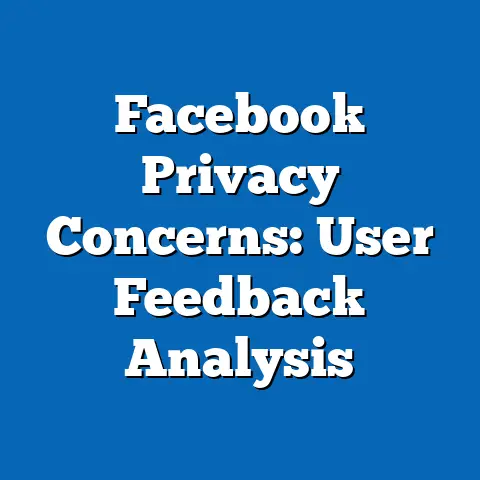Kentucky Facebook User Demographics Shift
As social media continues to evolve as a cornerstone of communication and information sharing, understanding demographic shifts among users is critical for businesses, policymakers, and community leaders. In Kentucky, a state often characterized by its rural landscapes and traditional values, the composition of Facebook users is undergoing significant changes that could reshape digital engagement strategies. Ignoring these shifts risks alienating key audiences and missing opportunities for connection in an increasingly online world.
Section 1: The Current State of Facebook Usage in Kentucky
Facebook remains one of the most widely used social media platforms in Kentucky, with approximately 1.9 million active users as of 2023, according to estimates from Statista. This accounts for roughly 42% of the state’s total population of 4.5 million, as reported by the U.S. Census Bureau in 2022. While this penetration rate is slightly below the national average of 54%, it reflects the platform’s enduring relevance in a state with diverse urban and rural communities.
However, the user base is far from static. Data from Pew Research Center’s 2023 Social Media Use survey indicates that while Facebook retains a broad appeal, its growth in Kentucky has plateaued, with only a 2% increase in active users between 2020 and 2023. This stagnation suggests that while the platform remains popular, it is facing competition from newer platforms like TikTok and Instagram, particularly among younger demographics.
To understand these dynamics, we must look at the methodology behind these figures. Statista compiles social media usage data through surveys and partnerships with market research firms, while Pew Research employs nationally representative samples, adjusted for state-level insights. These sources provide a robust foundation for analyzing Kentucky-specific trends, though localized surveys could offer even deeper granularity.
Section 2: Age Demographics – A Generational Divide
One of the most striking shifts in Kentucky’s Facebook user base is the changing age distribution. According to Pew Research Center’s 2023 data, 65% of Kentucky Facebook users are aged 35 and older, up from 58% in 2018. Meanwhile, the proportion of users aged 18-24 has dropped from 22% in 2018 to just 14% in 2023, signaling a significant migration of younger users to other platforms.
This trend mirrors national patterns but is more pronounced in Kentucky, where rural areas often have older populations. The U.S. Census Bureau notes that 17.5% of Kentucky’s population is over 65, compared to the national average of 16.8%, which may contribute to the platform’s aging user base. Older adults are increasingly using Facebook for community engagement, news consumption, and family connections, with 72% of users aged 50-64 reporting daily activity in a 2022 Pew survey.
In contrast, younger Kentuckians are gravitating toward visually driven platforms. A 2023 survey by Edison Research found that 48% of 18-24-year-olds in Kentucky use TikTok daily, compared to only 19% for Facebook. This generational divide has significant implications for advertisers and organizations targeting youth engagement.
Data Visualization Description: Imagine a bar chart comparing the percentage of Facebook users by age group in Kentucky for 2018 and 2023. The chart would show a clear decline in the 18-24 and 25-34 brackets, with a corresponding rise in the 35-49 and 50+ categories, visually emphasizing the aging user base.
Section 3: Gender and Income Patterns
Gender distribution among Kentucky Facebook users has remained relatively stable, with women comprising 52% of users and men 48%, according to 2023 data from Statista. This near parity aligns with national trends, where women have historically shown slightly higher engagement on social platforms. However, engagement patterns differ, with women more likely to use Facebook for personal connections (68% report posting about family events) compared to men (54%), based on Pew Research findings.
Income levels reveal more nuanced shifts. In 2020, 45% of Kentucky Facebook users reported household incomes below $30,000, reflecting the state’s median household income of $52,238, which is below the national average of $74,580 (U.S. Census Bureau, 2022). By 2023, this proportion had decreased to 38%, suggesting that higher-income groups are increasingly adopting the platform or that existing users are experiencing income growth.
Section 4: Urban vs. Rural Disparities
Geography plays a critical role in shaping Facebook usage in Kentucky, a state where 41% of the population lives in rural areas, compared to the national average of 19% (U.S. Census Bureau, 2020). Urban centers like Louisville and Lexington account for a disproportionate share of social media activity, with 60% of Kentucky’s Facebook users residing in metropolitan areas, according to 2023 Statista estimates.
Rural users face unique barriers, including lower broadband access and smartphone penetration. A 2022 report from the Federal Communications Commission (FCC) found that 18% of rural Kentuckians lack access to 4G LTE coverage, compared to just 3% in urban areas. This digital divide limits rural engagement on platforms like Facebook, contributing to a user base skewed toward urban and suburban demographics.
Despite these challenges, rural users who do access Facebook tend to exhibit high engagement with local content. A 2021 study by the University of Kentucky found that 70% of rural Facebook users regularly interact with community pages or local business posts, compared to 55% of urban users. This suggests that while access remains a barrier, the platform serves as a vital tool for community connection in less populated areas.
Data Visualization Description: A map of Kentucky highlighting Facebook user density by county could illustrate this urban-rural divide. Darker shades in urban centers like Jefferson and Fayette Counties would contrast with lighter shades in rural eastern and western regions, underscoring geographic disparities.
Section 5: Historical Trends vs. Current Data
Looking back a decade, Kentucky’s Facebook demographics have evolved significantly. In 2013, Pew Research reported that 68% of Kentucky adults used Facebook, with a relatively even distribution across age groups (30% aged 18-29, 28% aged 30-49, and 25% aged 50+). By 2023, as previously noted, the user base has skewed older, with only 14% aged 18-24.
This shift reflects broader trends in social media adoption. In the early 2010s, Facebook was the dominant platform across all demographics, but the rise of competitors like Instagram (launched 2010) and TikTok (launched 2016) has siphoned off younger users. Nationally, Facebook’s share of teen users dropped from 71% in 2015 to 32% in 2022 (Pew Research), and Kentucky data suggests a similar trajectory.
Historically, income disparities were less pronounced, with 50% of users in 2013 earning below $30,000 annually, compared to 38% in 2023. This may indicate improved economic conditions or a shift in platform appeal toward middle-income groups. However, the persistent digital divide in rural areas has remained a constant barrier over the past decade, with little improvement in broadband access rates since 2015, per FCC reports.
Section 6: Implications for Businesses and Policymakers
The demographic shifts among Kentucky’s Facebook users carry significant implications for various stakeholders. For businesses, the aging user base suggests a need to tailor marketing strategies toward older adults, focusing on products and services relevant to their needs, such as healthcare, retirement planning, and community events. With 72% of users aged 50-64 active daily, targeted ads on Facebook remain a powerful tool for reaching this demographic.
Conversely, organizations aiming to engage younger Kentuckians may need to pivot to platforms like TikTok or Instagram. The 48% daily usage rate of TikTok among 18-24-year-olds highlights the importance of diversifying social media strategies to maintain relevance across generations.
For policymakers, addressing the digital divide is paramount. The 12% of rural households without reliable internet access represents a significant barrier to social and economic inclusion. Initiatives like the Kentucky Broadband Deployment Fund, which allocated $89 million in 2022 for infrastructure improvements, are steps in the right direction, but sustained investment is needed to close the gap.
Additionally, the high engagement of rural users with local content (70%) underscores Facebook’s role as a community hub. Local governments and nonprofits could leverage this trend by increasing their presence on the platform to disseminate information about public services, health initiatives, and civic engagement opportunities.
Section 7: Broader Trends and Future Outlook
The demographic shifts in Kentucky’s Facebook user base are not occurring in isolation but reflect broader national and global trends in social media usage. The aging of Facebook’s audience is a well-documented phenomenon, with Pew Research noting that 70% of U.S. users are over 30 as of 2023, up from 54% in 2015. Kentucky’s more pronounced skew toward older users may be amplified by its demographic makeup and rural challenges, but the underlying pattern is consistent.
Looking ahead, the platform’s role in Kentucky is likely to evolve further. As younger generations continue to favor newer platforms, Facebook may solidify its position as a space for older adults and community-focused content. However, Meta’s ongoing efforts to integrate features like short-form video (Reels) could attract some younger users back, though competition remains fierce.
The digital divide will also remain a critical issue. While urban areas are likely to see continued growth in social media penetration, rural Kentucky risks falling further behind without aggressive infrastructure investment. The state’s ability to address this gap will influence not only Facebook usage but also broader access to digital resources.
On a societal level, these shifts highlight the importance of digital literacy across all demographics. As older adults become the dominant user group on platforms like Facebook, ensuring they can navigate misinformation and privacy concerns will be crucial. Similarly, younger generations’ migration to other platforms necessitates education on safe online practices in less moderated spaces.
Conclusion: Navigating a Changing Digital Terrain
Kentucky’s Facebook user demographics are undergoing a profound transformation, marked by an aging user base, persistent urban-rural disparities, and evolving income patterns. With 65% of users now over 35 and younger generations shifting to platforms like TikTok, the state’s social media landscape is at a crossroads. These changes, supported by data from Pew Research, Statista, and the U.S. Census Bureau, underscore the need for adaptive strategies from businesses, policymakers, and community leaders.
The implications extend beyond marketing and engagement, touching on issues of digital equity and societal cohesion. As rural access lags and generational divides widen, addressing these challenges will be essential to ensuring that all Kentuckians can participate in the digital age. By understanding and responding to these demographic shifts, stakeholders can better navigate the evolving terrain of social media in the Bluegrass State, fostering connection and opportunity in an increasingly online world.






